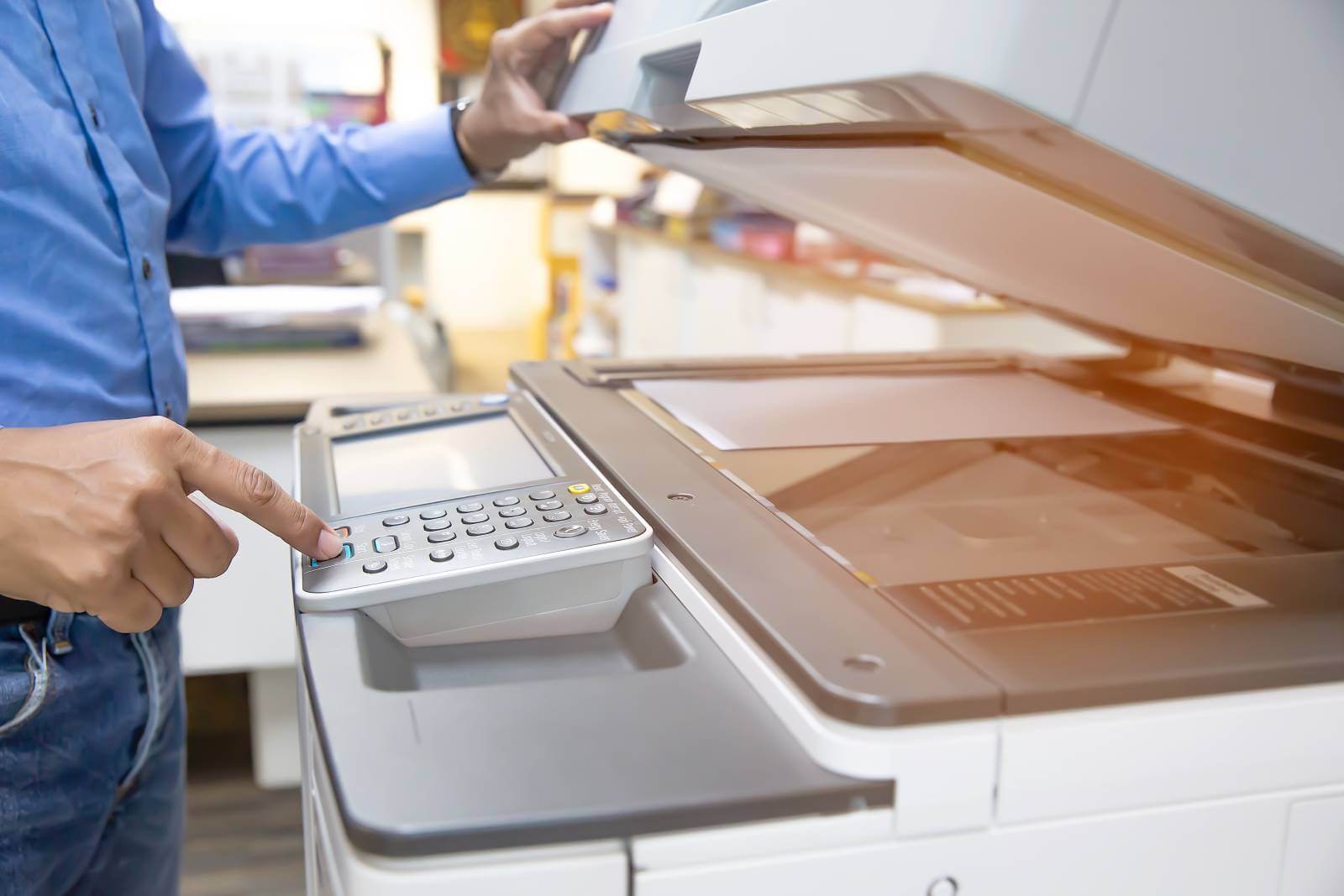
By 2021, 94% of the internet workload will be on the cloud, according to our friends at Cisco. Take a moment to let that sink in. Most companies use a hybrid strategy, with the 'big three' commodity clouds going head to head to make their cloud offering the most cost-effective.
Cost Benefits of Cloud Computing
The overall cost benefits of the cloud come down in large part to hardware responsibilities. If your on-premises hardware fails, that's a hefty cost on your business bottom line. On the cloud, even if a VM, a server, or an entire data centre goes down - that's the responsibility of the cloud provider, and you can continue with business as usual.
Running costs can also be a lot cheaper on the cloud than on-premises, because of PAYG pricing and elastic scaling capabilities, for example. To understand how each of the primary public cloud providers handles their customer pricing - let's turn to a cloud pricing comparison - and break down their unique pricing benefits with some of the cost innovations that each provider is particularly proud of.

Amazon AWS Cloud Pricing & Costs
AWS splits its cloud pricing benefits into three categories. The first is Pay as you Go. They compare this to the way that you pay for your utilities. You pay only for the services that you use and when you use them. This diagram shows how they compare the cost of on-premises to using AWS, complete with the added expenses of underutilisation.
AWS's following tool is Reserved Capacity. This is a shared cloud concept and means that if you know you're going to need a certain amount of computing or storage, for example, you can reserve this ahead of time and slash your costs. This could save you as much as 75% over the on-demand pricing, a great way to reduce costs on AWS.
Lastly, AWS offers Volume-based Discounts based on economies of scale. For something like storage, when looking at Amazon S3 pricing, for example, the more you use, the less you'll pay for each GB. Up to 50TB of storage is 0.023 GB/month, while 500TB+ will reduce the cost to 0.021 GB/month. These can add up. The AWS pricing calculator can be used to estimate AWS cloud pricing ahead of time.
Google GCP Cloud Pricing & Costs
Google Cloud pricing is also built around a pay-as-you-go model and promises no activation or termination fees. On top of this, your Google Cloud cost can be considered alongside the following added cost benefits:
-
- Preemptible VM Instances: If your workloads don't need continuous availability, such as background processes for data management, for example, set them up to be interrupted where necessary, and save up to 79%.
-
- Per-second billing: With Google Cloud VM pricing, you pay for exactly what you use, by the second - and no further.
-
- Sustained-use Discounts: Thinking about Google Cloud compute pricing? If your workloads are running a significant amount on Compute Engine and Cloud SQL each month, you'll be automatically eligible for a discount of up to 30%, as seen below.
Committed-use Discounts: While sustained-use discounts help you reduce costs on long-term or larger projects, committed-use discounts are great for users with just a few projects. These can be agreed upon ahead of time, and you'll get a discount of up to 57%, without any lock-in.
Microsoft's Azure Cloud Pricing & Costs
Microsoft Azure's cloud pricing also comes with the ability to reserve instances ahead of time, but with a one or three-year commitment to lock in the price savings. You can exchange or cancel your instances at any time to make it work for a growing or evolving business model. There are some bonuses when it comes to Azure cloud cost control.
First, you will pay less for development and testing resources, including zero software charges for Azure VMs, and reduced dev-test pricing on additional Azure cloud services.
Azure also has a similar process to preemptible VM instances on GCP. Spot VMs are 90% most cost-effective than traditional Pay-as-you-Go VMs on Azure and are used for interruptible workloads.
You can also use Reserved Instances in a similar way to Reserved Capacity or Committed Use Discounts. By agreeing ahead of time, cost savings can be more than 70% over Pay-as-you-Go. On top of this, Azure has a Hybrid Benefit offering, which means you can use your existing licenses from Windows Server or SQL Server with software assurance. As you can see below, this results in even deeper savings where applicable. Here's the Azure pricing calculator that can help you make sense of it all.
How Much Does It Cost To Build Cloud Computing Service?
Dedicated resources are a reliable source for handling the business. The cost of infrastructure and the requirement of hiring system engineers increases the cost. This fears the new organisations from setting up the infrastructure. The lack of scalability and the urgent necessity of the resources are met by Cloud computing. Cost investment funds are one of the principal reasons why organisations are moving to the Cloud.
Even though Cloud Computing services can offer your organisation numerous budgetary favourable circumstances, it is essential to plainly comprehend the cost ramifications of the Cloud and how it could affect your organisation.
Probably the most basic cost investment funds include:
-
- No enormous forthright capital investment
-
- Diminished programming costs with upgrades included in the month to month charges
-
- Decreased spending for IT support
-
- Business Continuity is inculcated in the Cloud condition
-
- Reserve funds increase through higher human capital productivity and more noteworthy effectiveness
-
- Tax cuts
The cloud can eradicate recurring large capital expenditures
With cloud computing services, you never again need to spend many upfront capitals on the software and hardware essential to run your system. In most cloud environments, these expenses and the cost to keep up your system are recognised for a level, month-to-month charge. Moreover, when the server and system spine (switches, firewalls, stockpiling) should be improved, the cloud supplier must do these redesigns - with no additional expense to the client. In this way disposing of enormous monetary responsibilities of performing future company-wide updates.
Cloud Servers and Network Hardware are of Higher Quality
A significant distinction in the foundation of the onsite-based system versus a cloud-based system is that the servers and hardware of the network are the absolute best and most excellent when obtained for cloud situations. An excellent premise-based server may cost $10,000 - $15,000 through a Cloud-based server may cost $70,000 - $100,000 or more. The same is found for the switches, the firewalls, and the remainder of the hardware utilised in a cloud situation. Sap development services suppliers can't bear the cost of hardware failure, so great gear is utilised, and every last bit of it is exceptionally redundant inside the data centre.
No expenditures on costly hardware
When all is said and done, big data solutions don't require the outright acquisition of server equipment, storage of network, reinforcement frameworks, recovery systems for disasters, power or cooling frameworks, utility costs, or data centres. When a business moves to a cloud environment, they dispense with the requirement for servers and the physical space expected to house those servers.

No requirement for the Upfront Expense of Capital for Infrastructure Software
Cloud Integration services eradicate the requirement for the upfront capital prerequisite of obtaining programs like Windows Server, SQL Server, Application and Database Servers, Client Access Licenses, Middleware, SharePoint, Citrix Server, and customer licenses, etc. These expenses are paid in the month-to-month charges for the cloud condition and backing.
Less Expensive Software Upgrades
Many developers include free programming upgrades for applications that are facilitated in the cloud and are paid as a membership inside the month-to-month cloud environment charges. This implies no costly programming updates and none of the interference that product upgrades make in organisations.
The Cloud renders unsurprising IT costs
The unpredictable nature of the current "Break-Fix" arrangement for PC systems has baffled entrepreneurs for a long time. One of the largely favourable circumstances of cloud computing for entrepreneurs and their staff is the consistency that it brings. Cost of continuous updates, replacement of outdated servers, and other variable expenses are dispensed with Cloud processing. Most organisations that have moved to the Sap development services enormously welcome the predictability and consistency of paying a fixed month-to-month cost for their IT needs.
This consistency occurs on two or three levels. To start with, organisations pay for the services they use, rather than paying for software, hardware, power, and the help for keeping these things secure, steady, and working appropriately.
Second, in the old, on-premise model, when you buy programming, you are left with that adaptation for a long time, alongside the product's multi-year upgrade cycles. While you can work around this with additional outsider items, it's not so proficient as cloud programming.
Cut-down expenses made on IT Operations
This is ordinarily perhaps the best wellspring of reserve funds when a business moves a few or the entirety of its frameworks to the Cloud. Staffing costs in the IT division or for redistributed IT Support for sending, working, and keeping up applications and hidden foundations can be way too expensive, and a considerable lot of these expenses are incredibly decreased in a cloud domain.
When a business is working in the cloud, the big data cloud solutions' merchant takes on almost the entirety of the expenses related to introducing, running, and keeping up the applications, the primary programming framework, and the associated equipment. For most organisations, this speaks to reserve funds of a full-time IT proficiency. Also, this doesn't constantly mean disposing of employees in the IT office - it can likewise be viewed as evacuating unnecessary, low-worth work from IT, which permits the IT group to concentrate on increasingly vital, esteemed services.
Tax advantages of Cloud Computing
As opposed to representing hardware and software as a capital cost and afterwards devaluing those costs over the long run, with the Cloud's membership-based model, those costs are viewed as operational and can be deducted each year, instead of more than quite a while.
Is Cloud Storage Expensive?
When it comes to the cloud, there are still many differences between countries. The European cloud market is much more fragmented than the American one for several reasons, including the slightly different regulations in each country. Cloud adoption is slower in Europe, and many organisations still like to maintain data and infrastructure on their premises. The Australian approach is quite pragmatic, and many enterprises take somewhat advantage of the experiences made by similar organisations on the other side of the pond. One similarity is cloud storage or, better, cloud storage costs and reactions.
Data is growing everywhere at an incredible pace, is nothing new, and often faster than predicted in the past years. At first glance, an all-in cloud strategy looks very compelling, low $/GB, less CAPEX and more OPEX, increased agility, and more, until, of course, your cloud bill starts growing out of control.
There are at least two reasons why a cloud storage bill can get out of control
-
- The application is not written correctly. Someone wrote or migrated an application that is not explicitly designed to work in the cloud and is not resource savvy. This often happens with legacy applications that are migrated as-is. Sometimes it's hard to solve because re-engineering an old application is simply not possible. In other cases, the application behaviour could be corrected with a better understanding of the API and the mechanisms that regulate the cloud (and how they are charged).
-
- There is nothing wrong with the workload, it's just that data is being created, read, and moved around more than in the past.
Optimisation
Start by optimising the cloud storage infrastructure. Many providers are adding additional storage tiers and automation to help with this. In some cases, it adds some complexity (someone must manage new policies and ensure they work properly). Not a big deal, but probably not a huge saving either.
Also, try to optimise the application. But that is not always easy, especially if you don't have control over the code and the application wasn't already written with the intent to run in a cloud environment. Still, this could pay off in the mid to long term, but are you ready to invest in this direction?
Bring Data Back
A standard solution, adopted by a significant number of organisations now, is data repatriation. Bring back data on-premises (or a colocation service provider) and access it locally or from the cloud. Why not?
At the end of the day, the bigger the infrastructure, the lower the $/GB and, above all, no other fees to worry about. When thinking about petabytes, there are several ways to optimise and take advantage of which can lower the $/GB considerably: fat nodes with plenty of disks, multiple media tiers for performance and cold data, data footprint optimisations, and so on, all translating into low and predictable costs.
At the same time, if this is not enough, or you want to keep a balance between CAPEX and OPEX, go hybrid. Most storage systems in the market allow to tier data to S3-compatible storage systems now, and I'm not talking only about object stores - NAS and block storage systems can do the same. I covered this topic extensively in this report but checked with your storage vendor of choice, and I'm sure they'll have solutions to help out with this.
Multi-cloud
Another option that doesn't negate what is written above is to implement a multi-cloud storage strategy. Instead of focusing on a single-cloud storage provider, abstract the access layer and pick up what is best depending on the application, the workloads, the cost, and so on, all determined by the moment's needs. Multi-cloud data controllers are gaining momentum with prominent vendors starting to make the first acquisitions (RedHat with NooBaa, for example), and the number of solutions is growing at a steady pace.
In practice, these products offer a standard front-end interface, usually S3 compatible, and can distribute data on several back-end repositories following user-defined policies. This leaves the end-user with a lot of freedom of choice and flexibility regarding where to put (or migrate) data while allowing them to access it transparently regardless of where it's stored. Last week, for example, I met with Leonovus, which has a compelling solution that associates what I just described to a strong set of security features.
There are several alternatives to significant service providers when it comes to cloud storage, some of them focus on better pricing and lower or no egress fees, while others work on high performance too. As I wrote last week in another blog, going all-in with a single service provider could be an easy choice initially but a considerable risk in the long term.
Closing The Circle
Data storage is expensive, and cloud storage is no exception. Those who think they will save money by just moving all of their data to the cloud as-is are making a big mistake. For example, cold data is a perfect fit for the cloud, thanks to its low $/GB, but as soon as you begin accessing it over and over again, the costs can rise to an unsustainable level.
To avoid dealing with this problem later, it's best to think about the right strategy now. Planning and executing the right hybrid or multi-cloud strategy can surely help keep costs under control while giving that agility and flexibility needed to preserve IT infrastructure, therefore business and competitivity.





 Always Avoid the Trash Heap
Always Avoid the Trash Heap



















